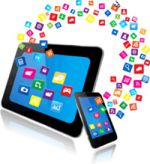Rather than flashy ad campaigns, brands are focusing on creating functional, useful, and relevant tools to meet the needs of consumers.
A good example is the Adidas Fitness App.
Their focus is on improving women’s health and wellness, so while selling product they also are selling the brand lifestyle which aims at helping women improve their general health and well-being – simultaneously selling the brand lifestyle rather than its products.
Where most brand or digital marketing activity tends to focus on entertaining or interrupting consumers – brand utility is all about helping them.
Instead of selling a product or a brand story (content marketing), Utility marketing puts the customer first and provides a service that can benefit consumers over time.
The Nike and Run Club apps are two more examples of tapping into the customer needs and lifestyle by tracking their runs or setting fitness goals. It becomes more about the functional aspects of the app rather than being a consumer of the product, so they keep coming back to the app and over time may become a customer.
With people spending an average of 30 hours per month in apps to either start their day or end their evening, they play a key role for those
I-want-to-know, I-want-to-go, I-want-to-do, I-want-to-buy moments. They’re also a powerful way for brands to build deeper relationships with their customers.
They’re also a powerful way for brands to build deeper relationships with their customers.
The perfect equation for brand experience and brand utility has done wonders for the Starbucks App. The brand experience is as easy and intuitive to navigate as walking into
the app will keep users actively engaged, and can serve as a reliable revenue driver. When diving into the mobile app space as a traditional brand, think about the experience you want to convey to your users and the specific utility you’re offering.
When consumers are able to (and cannot resist) using the service time and again that utility marketing is truly effective.




